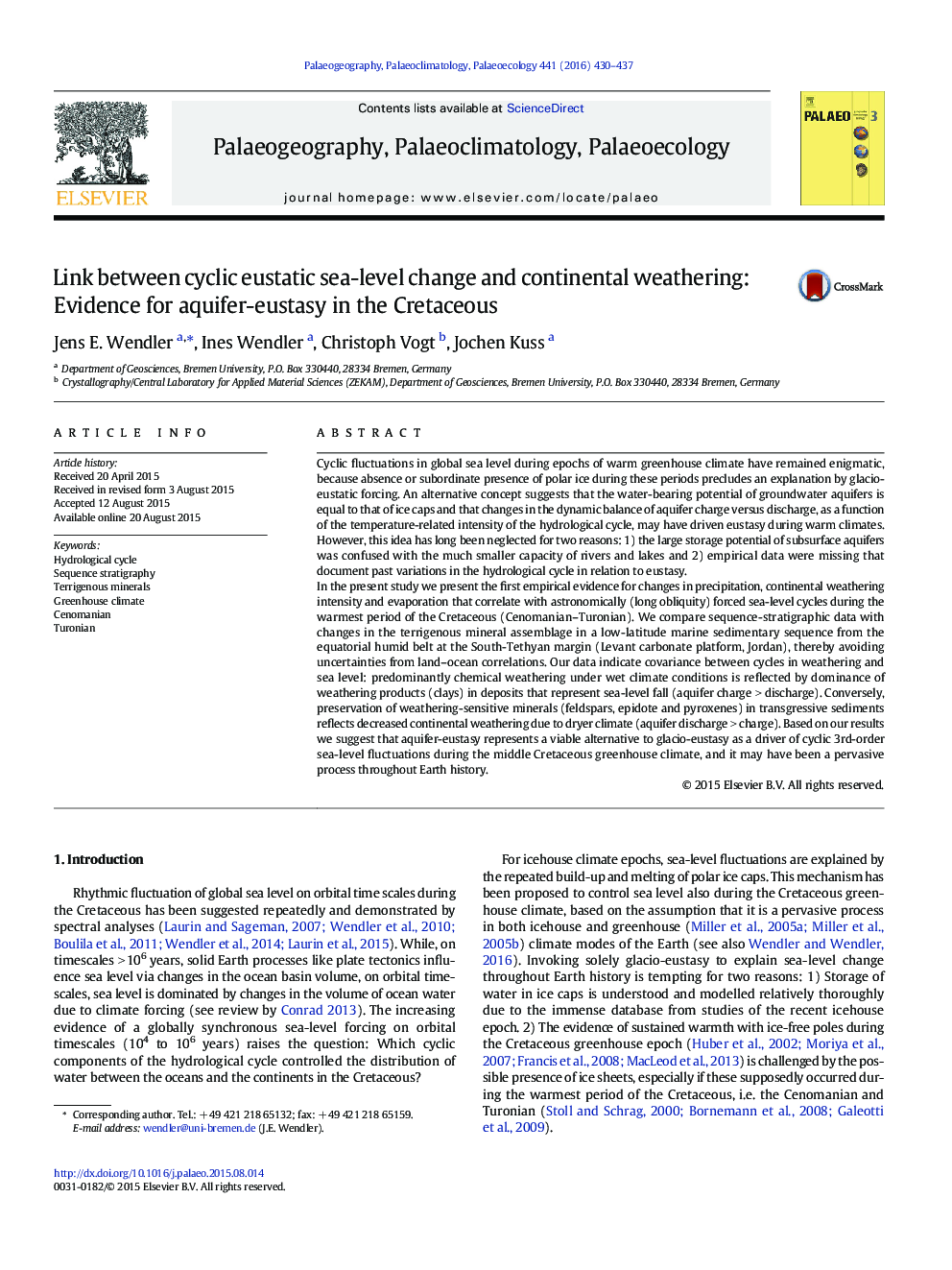| Article ID | Journal | Published Year | Pages | File Type |
|---|---|---|---|---|
| 6349462 | Palaeogeography, Palaeoclimatology, Palaeoecology | 2016 | 8 Pages |
Abstract
In the present study we present the first empirical evidence for changes in precipitation, continental weathering intensity and evaporation that correlate with astronomically (long obliquity) forced sea-level cycles during the warmest period of the Cretaceous (Cenomanian-Turonian). We compare sequence-stratigraphic data with changes in the terrigenous mineral assemblage in a low-latitude marine sedimentary sequence from the equatorial humid belt at the South-Tethyan margin (Levant carbonate platform, Jordan), thereby avoiding uncertainties from land-ocean correlations. Our data indicate covariance between cycles in weathering and sea level: predominantly chemical weathering under wet climate conditions is reflected by dominance of weathering products (clays) in deposits that represent sea-level fall (aquifer charge > discharge). Conversely, preservation of weathering-sensitive minerals (feldspars, epidote and pyroxenes) in transgressive sediments reflects decreased continental weathering due to dryer climate (aquifer discharge > charge). Based on our results we suggest that aquifer-eustasy represents a viable alternative to glacio-eustasy as a driver of cyclic 3rd-order sea-level fluctuations during the middle Cretaceous greenhouse climate, and it may have been a pervasive process throughout Earth history.
Related Topics
Physical Sciences and Engineering
Earth and Planetary Sciences
Earth-Surface Processes
Authors
Jens E. Wendler, Ines Wendler, Christoph Vogt, Jochen Kuss,
